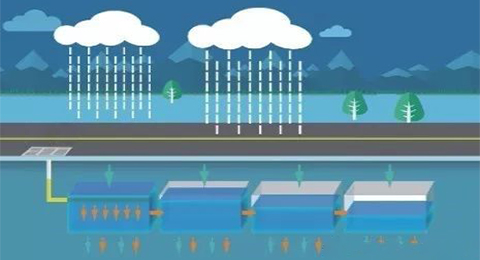400-9920-618
With the rise of the smart city movement, more and more IoT devices are applied to urban infrastructure, which greatly promotes the modern management of cities and brings countless benefits. Among them, stormwater management is a very necessary but may be overlooked project.

Urban rainwater problem
Cities full of concrete and metal don't absorb as much rainwater, leading to increased runoff, especially during heavy rains. This runoff makes cities more vulnerable to flooding, damage to businesses and homes, and threatens people's lives and property. Flooding can damage public infrastructure, housing, etc. or cause flood damage to small businesses. In severe cases, it can drive people out of their homes or even cause life-threatening injuries.
In addition, urban stormwater runoff can easily lead to some environmental problems. Excessive rainwater absorbs pollutants such as pesticides, antifreeze, heavy metals, and petroleum, which are ultimately injected into environmental ecosystems. Without effective management, heavy rains can harm surrounding rivers, lakes and oceans and are already threatening in many areas.

IoT technology devices include RFID device,sensors and so on can help stormwater management in multiple ways
1. Water quality measurement
Not all environmentally harmful runoff occurs during severe flooding events, making it difficult to identify. IoT sensors are installed in sewers and other waterways. These can collect data on water quality, especially after storms, and can reveal the extent and content of pollution. This information can reveal the cities where the water pollution is coming from and guide responses.
2. Weather pattern analysis
Connected weather sensors can collect local environmental data and access forecasts from the National Weather Center. Using this information, they can generate accurate forecasts of upcoming rainfall, allowing them to adjust stormwater management strategies in time to impact changes in the water system. This approach is constructive for coastal cities or other storm-prone areas.
3. Stormwater runoff optimization
When storms come, IoT technology can help runoff management systems adapt in real time. Every rainfall situation is different, so some areas may experience more runoff than others and require more help. IoT sensors can detect these conditions and adjust stormwater infrastructure accordingly to mitigate the impact.
4. Real-time alerts
Even a very effective stormwater management system can't stop every storm, especially a heavier storm. Sensors that monitor water flow to regulate valves in city waterways can detect when there is a risk of flooding. They can then predict which areas will be most affected by flooding and issue warning messages. These early warnings allow people to prepare in advance to prevent injury and loss of life
5. Stormwater Infrastructure Maintenance
IoT sensors can also collect data on infrastructure damage and performance. IoT networks can alert maintenance personnel if they are close to potentially costly failures. Cities can then repair their waterways as needed, preventing breakdowns and avoiding unnecessary repair costs and ensuring water systems are running at peak performance.
Cities will become safer and more efficient as IoT becomes more commonplace in municipal applications. Stormwater runoff is a threat to many major cities and their surroundings, but IoT devices offer solutions to make cities smarter and safer.